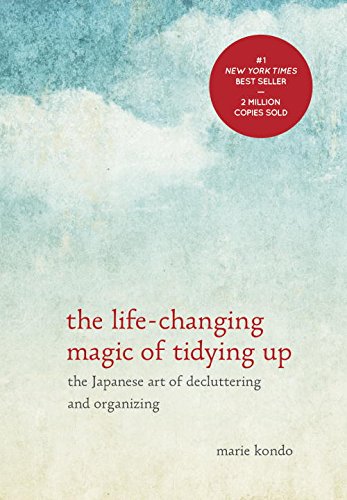I’d like to take a moment to thank readers for their continued attention to this blog and this site. The Women’s March drove home the point of how important it is for all of us to be aware, and for us to make our voices heard. The beginning is simple: learning what is going on.
Policy
Up to date policy includes one Alex Azar, who will be the new HHS ( Health and Human Services) secretary. As such he will be in charge of health policy in the nation. He has vowed to consider the interests of both parties.
The legislature is gearing up to vote on a 20 week abortion ban. I’m not sure how much effect this will have since most elective abortions are far earlier than this. Since Roe versus Wade was based 45 years ago, making abortion legal, approximately, twelve hundred restrictive state laws have been passed.
The Trump administration is crafting a program called “ Conscience Rights” which would allow a health care provide to deny a patient care based on their beliefs. This care would obviously include controversial procedures like abortions and assisted suicide, but would also extend to providing contraception and sterilization. Numerous physician groups including ACOG have raised substantial objections. I would not like to see health care devolve this way. I already know physicians who disapprove of people who get abortions, and physicians who disapprove of people who don’t practice birth control to have large families “ as many as God will give”, or people who drink, or people who smoke, or people who get fat or get sexually transmitted infections. Is there no end to our judgmental mentality ? I though we were in this to teach, comfort and cure.
Utah is where I went to medical school. It is also the center of governance for the Church of Jesus Christ and the Latter Day Saints, aka the Mormon Church. In general I found the people there an attractive mix of family oriented, strictly religious, and yet interested in and respectful of science and the diverging views of others. So in this progressive atmosphere it comes as no surprise to me that a Republican legislator Representative Ray Ward, has proposed HB 12, which will enable Utah Medicaid to provide birth control, which it currently does not. He is proposing this to save money by decreasing unplanned pregnancies, abortions and reducing all costs associated with those. Brilliant !
Texas lost $35 million in federal funds which it voted to exclude Planned Parenthood from the recipients list. It basically lost $35 million worth of care to Texas women. Could this be related to the astounding increase in Texas Maternal Mortality ? Now Texas legislators are trying to get that money back. They are proposing their own program which will still exclude Planned Parenthood; They are calling it Healthy Texas Women. If they get their money back for their new program, there is concern that other states will similarly overhaul how federal money is delivered to women’s health clinics.
Meanwhile, nationwide, women continue to flock to clinic to obtain long acting IUDs ( intrauterine devices) to give them birth control in case the contraceptive mandate of Affordable Care Act is revoked.
The Trump administration is trying to find more ways to “ excuse” people from the mandatory requirement to have health insurance, the so called “ individual Mandate” part of the ACA ( Affordable Care Act). For all the world, you would think they want fewer people insured. Oh wait ! They do want fewer people using federally sponsored health insurance plans, since those cost the government money which they would prefer to keep for items on their own agenda. They justify this stating consumers should have freedom of choice, meaning the freedom to save for health care expenditures, as if that is common practice, or you could reasonably expect to do it for a large 5 figure expenditure. Last year, there were 3.2 million more people uninsured compared to the year before. Most of this is reckoned to be people who simply chose not to pay for health care. I cannot understand why it is not simply like car insurance. If you are on the road, you must have insurance. If you do not, and something happens, you will cost others a great deal of money and yourself a great deal of trouble. The same is true if people are too irresponsible to obtain health insurance.
Medical News
Hip fractures among women are on the rise. This new study shows what I have considered inevitable. The women of the Diet Coke, Tab and too much coffee age are upon us. Many were smokers, and few drank milk, let alone ate leafy greens. No wonder bones are breaking. Here in Montana, where winter is 9 months long and there are 3 months of bad sledding, vitamin D deficiency is rampant. Vitamin D is crucial to bone metabolism and is manufactured in the skin by sunlight. Pacific Northwesterners and many of us in the Rocky Mountains inland should consider getting checked and supplemented.
Breastfeeding may protect against type two diabetes in women. The longer the breastfeeding, the greater the reduction in risk. We have always advised that breastfeeding helps moms lose unwanted weight, and of course that in and of itself lowers risk for diabetes.
Placental insufficiency is just what it sounds like it is. All placentas are not created equal. Placentas deliver oxygen and nutrients to a growing baby. However, various medical conditions or just bad luck will result in a poorly functioning placenta. Just about any pregnancy complication such as high blood pressure, poor nutrition, or smoking will result a placenta of poor quality and a higher risk of complications for baby. The worst complication is of course stillbirth. A new study has suggested that nearly a quarter of stillbirths could be preventable. Placental insufficiency is usually the culprit, and with standard prenatal care it is not hard to diagnose. When we identify the problem, we increase the surveillance with monitoring and Ultrasound. Any problems with access to good prenatal care will interfere with identifying and treating complications that lead to stillbirth.
Texas continues to be in the news as researchers and policy people probe the appalling maternal mortality figures. As of this writing we know that many factors are to blame including access to prenatal care, prevalence of black women in the data set, especially those who are underserved, or who have hypertension. Most interesting to me is the contribution of stress from chronic societal discrimination.
The spotlight is now on my state, Montana. In the case of 14 child deaths in Montana this year, 3/4 of them took place when an infant slept in the same bed as a mother who was using drugs. Our hospital has addressed this by have an active department of Social Services, an Addiction Specialty service, and the Baby Box program. This is modeled after a common European practice wherein a family with a newborn is sent home with a baby box full of safe supplies. The box itself is made to evidence based standards, having a flat firm mattress , a fitted sheet, and no covers. Baby is kept warm in a sleep sack, a kind of gown in which they cannot get tangled or suffocate. In Finland, for example this has been done for over 75 years with good results. Some say it has helped Finland achieve one of the lowest infant mortality rates in the world. The Baby Box program also includes extensive education about safe separate sleeping practices, but it remains challenging to change people’s behavior of keeping baby with them in the bed.
http://www.bbc.com/news/magazine-22751415
A County Attorney in Big Horn County, Montana has announced a crackdown on pregnancy women who use drugs or alcohol. That office plan to seek civil restraining orders and even incarceration to meet their goals. ACOG has come out against this, indicating it basically keeps high risk women away from prenatal care. Handmaid’s Tale, much ?
When medicine and policy collide: More women received indicated mammograms when Obamacare, aka the Affordable Care Act, banned copays. If that does not tell you copays are a barrier to screening, I don’t know what does.
Women skip mammograms for money. But, a new study says women skip paps for embarrassment. Young women in particular could identify embarrassment due to body shape, shape of vulva, or smell. We need to do more to help women and girls feel comfortable in their own bodies.
A new study reveals that increased long use of oral contraceptive pills confers better and better protection agains endometrial (uterine) and ovary cancer. It also confirms that long term use does not seem to affect risk of colon or breast cancer. You may have in the past heard other studies which have contradicted this. The good news is that our methodologies improve and computing power increases every year, making the quality of our data better and better as time goes by.
Not-so-fun-fact: New research incites that a women's risk of dying from childbirth is 14 times higher than her risk of dying from an abortion.
Finishing today in the SUPER COOL department, we have two entries.
First, those Scandinavians are once again on the forefront of progressive perinatal care, this time using the power of probiotics. A new study shows probiotics consumed in pregnancy lowers the risk of preeclampsia and preterm birth. These Scandinavian countries provide comprehensive prenatal care and keep thorough databases on all patients, enabling them to glean meaningful information of good quality. More research is needed on how to implement this finding.
Lastly, Apple has roiled out a new feature in the Health App enabling users, meaning patients, to control and transfer their own medical records. Twelve large medical institutions have begun beta testing. This is great for patient empowerment. It is also partakes of the open data movement, which says that in an ideal world, data should be fully shared, without fear of discrimination. When patient and research data can be shared, we can expect a great acceleration of medical progress on the topics which matter most.
Stay tuned until next week, for more breaking news from the world of Obstetrics and Gynecology.









































